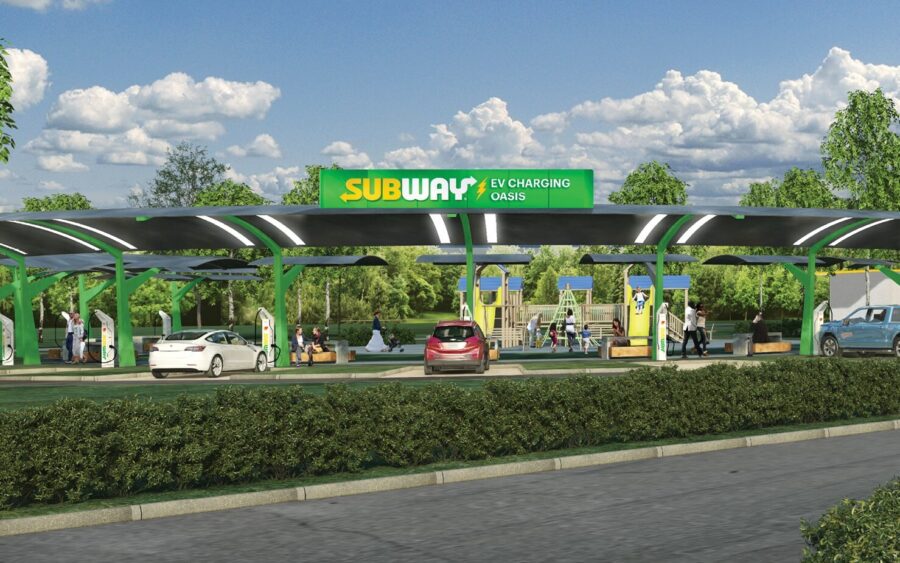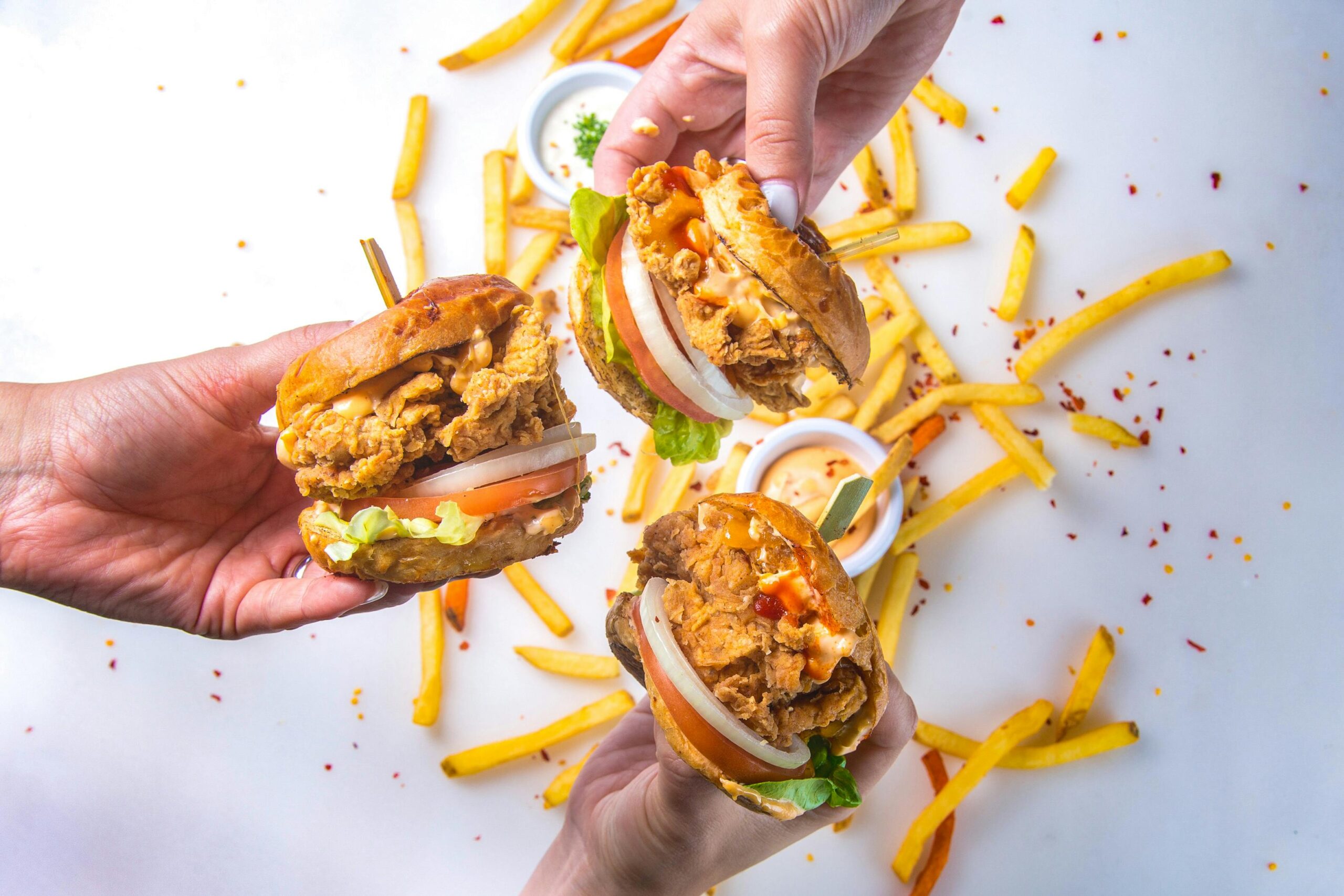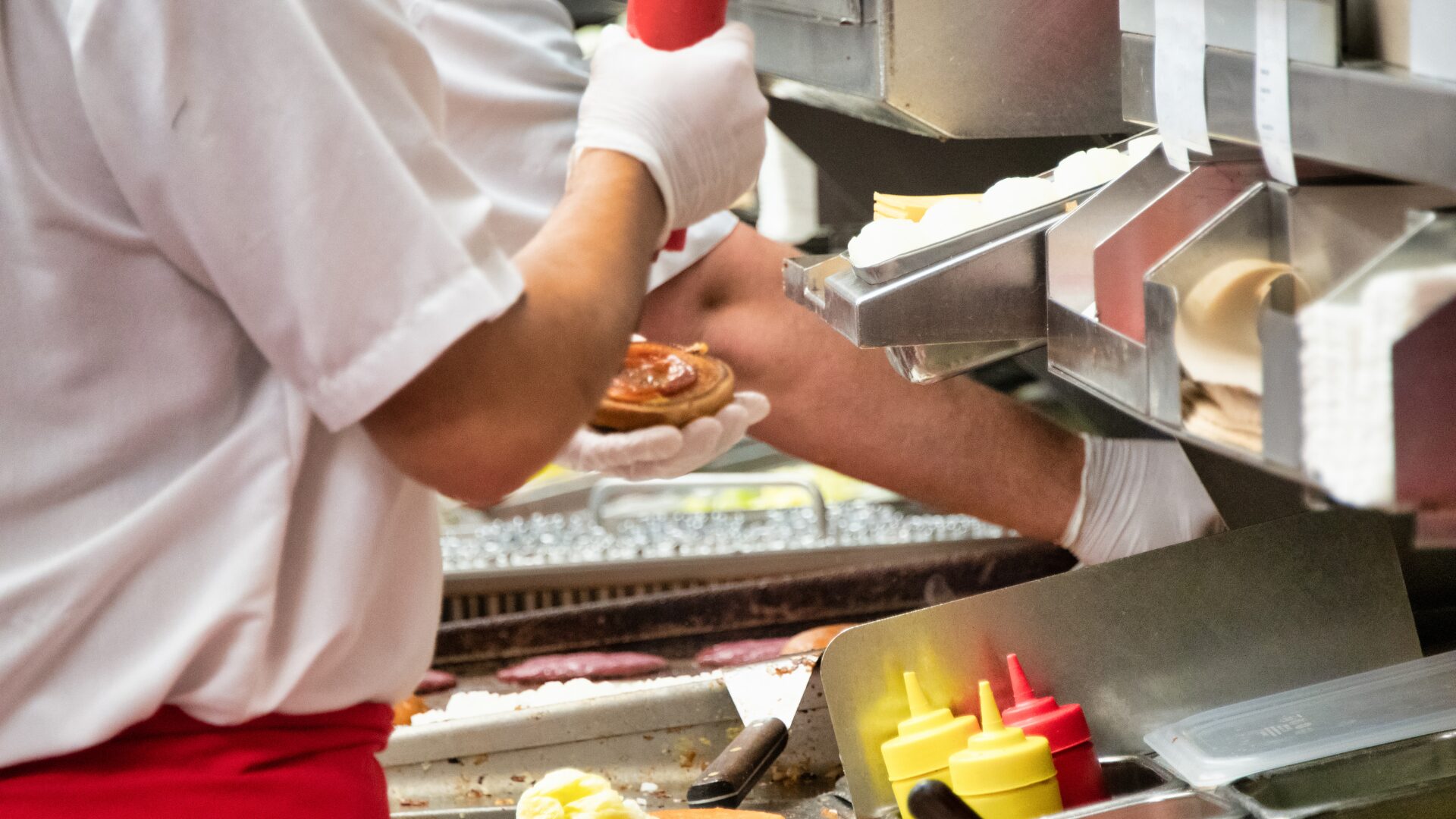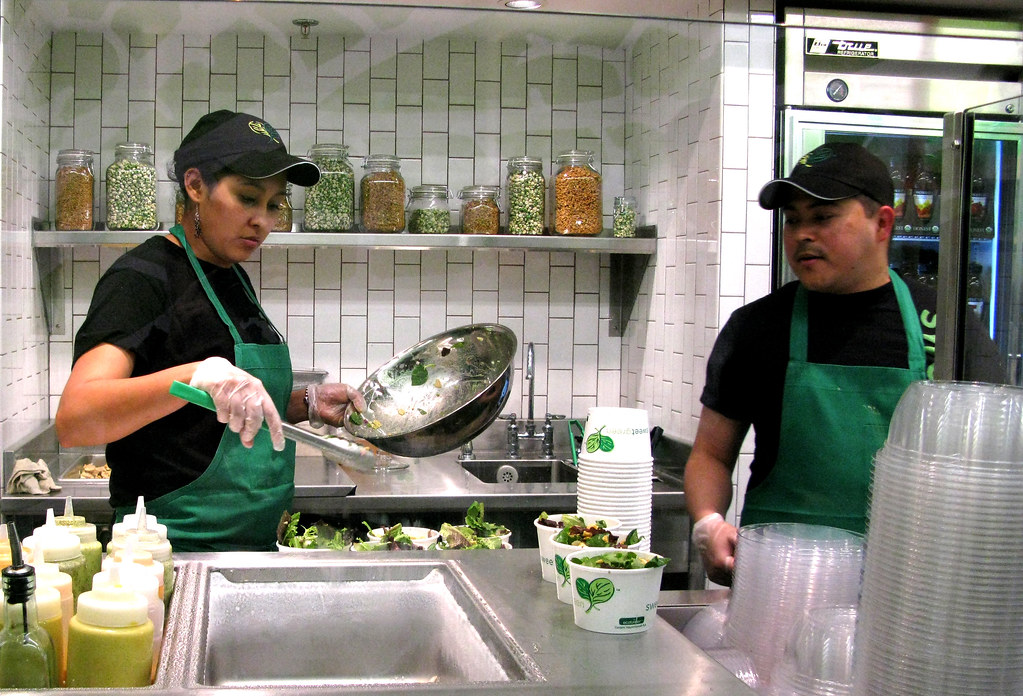Subway is and has been a lot of things and subtle isn’t one of them. The company that brought the meatball sub, stamp reward cards, five-dollar footlongs and that unforgettable jingle to the forefront of American commerce has made headlines again for its next step into the maybe, possible, squint-and-you-might-see-it future: Subway-brand “EV Charging Oasis” parks, replete with green space, Wi-Fi, and one of the world’s most recognizable logos towering above electric vehicle charging stations.

Image courtesy Subway Restaurants
As the estimated $8 billion brand is reportedly being courted by private equity firms for purchase, its recent partnership with GenZ EV Solutions begs the question, is this a good idea? Can Subway build enough of a critical mass of oases to make this endeavor worthwhile? Are there enough EV drivers to support such a project?
It’s a big gamble, and there may be no better time to do it as the Biden administration stresses renewable energy, gas prices for hybrid owners have stabilized (for now), and Tesla just lowered the cost of some of its models to qualify for the federal tax credit. Meanwhile Ford has resumed production of its F-150 Lightning EV pickup, GM will be entering the arena with the electric Silverado, and most of the world’s major manufacturers are rolling out EV-only lines, models, and electric updates to legacy vehicles.
Perhaps the larger question is much simpler: do the vox populi care enough about Subway to visit an “oasis park” and munch on a chicken bacon ranch while their vehicles charge?
Recent data suggests yes, they do. For the last several years, Subway has been on a mission to remodel its restaurants into more contemporary buildings, revamp its menu, establish a second headquarters in Miami, and move confidently into the future, sale or no sale.
Subway is a privately held company and not obligated to report financial news, but the sandwich chain said its global same-store sales rose 9.2% in 2022 (7.8% in the U.S.). In the same interview with Restaurant Business, CEO John Chidsey said that average unit volumes have not been as high since 2012, putting them somewhere over $470,000 and under $485,000 based on data from Technomic. Still, Subway closed more shops than it opened in 2022, though it closed the least amount of shops since 2015. Chidsey said that Subway is focusing on increasing existing shop revenues instead of unit growth despite offering new franchisees a rebate on franchise fees by 2024.
“We’ve had eight straight quarters of same-store sales increases,” Chidsey said, noting that they continue to move in the right direction. That’s a lot of chicken bacon ranch.
Turn Left at the Subway Oasis Park
Whether that direction steers buyers toward its proposed oasis parks is by and large not up to Subway. What happens when a QSR stakes part of its future in the new-look electric automotive industry? Is the total (or maybe financial value) greater or lesser than the sum of its parts? No one really knows amid inflation and an economy that some believe is nose diving toward recession and that others contend is coming up for air from a pandemic-stricken country and anemic global supply chain.
Nonetheless, the world’s top sandwich chain is moving forward with its oasis plan this year. Subway will begin installing oasis parks and EV charging stations at several remodeled locations as part of a pilot project and is partnering with GenZ EV Solutions to help run the charging network. In a statement, Subway said customer demand will help guide many of its decisions.
“We’re constantly exploring new ways to innovate and exceed our guests’ expectations for a high-quality, convenient experience,” said Mike Kappitt, chief operating and insights officer for Subway, in a recent statement, describing the proposal as “a win for our guests, our franchisees, and our planet, creating a dedicated space for drivers to charge their vehicle while enjoying their favorite Subway sandwich.”
“Equitable access to charging is essential to the adoption of EVs in the future and Subway’s scale will play an important role in democratizing charging infrastructure for millions of Americans,” said Jose Valls, GenZ EV Solutions CEO, in another statement.
Where the Oven-Roasted Turkey Meets the Road
Many automotive industry experts believe there will be several dozen types of EVs available under $30,000 in the U.S. market within several years. From Vietnamese startup VinFast to the popular Ford Mustang Mach-e and burgeoning electric pickup market, some of the world’s biggest brands are going all-in on sustainability, ESG initiatives, and cars that require a plug instead of a pump.
According to federal data, there are now more than 3 million EVs on the road and over 130,000 public chargers across the country. The Biden administration wants to increase the number of chargers to over 500,000 by 2030 via the National Electric Vehicle Infrastructure program, a $5 billion initiative to create an equitable, accessible, and swift coast-to-coast charging network.
“A lot of people will be lining up for subsidies to build out networks like this,” – as seen with Starbucks and ChargePoint, and Taco Bell and ChargeNet – “but that doesn’t make it a good idea,” Mike Dalton told The Food Institute. Dalton is the founder of Guided Innovation Group, a consulting firm in tech and new market breakthroughs.
“The concept is built on the limitation that EVs will take so long to charge that you can go have a meal in the meantime,” Dalton continued. “That doesn’t seem to line up with the majority expectation and the fact that most people won’t switch from ICE [internal combustion engine] vehicles to EVs until they can fill up in a few minutes like they do today.”
Clyde Boyce, chairman of the advisory board at EV Chargers and Installation, LLC, tends to agree.
“IMHO, no,” he told The Food Institute, answering the question, Will Subway’s oasis project work? “QSRs are just that – and Subway is unique as it builds sandwiches to order. Even if the customer eats in, the time of stay might be 30 minutes…peak periods are lunch and dinner, so about four hours per day. It’s a nice thought but as an investment, not so much.”
People travel all the time, though, and rest, fuel, and eat whenever they can. “I think any small town should have an EV charging station where it wants tourists to land for 45 minutes,” said Cathy Bernardy Jones, EV owner, in the same discussion with The Food Institute and other contributors to this article. Discovering a convenient charging station en route to a popular family destination in northern Minnesota, Bernardy Jones is adamant stations like these – that offer necessary fuel in the form of electricity and a chance to feed the family – are absolutely necessary.
“We will stop [at the station] every time we go up there now that we’ve discovered the shops and restaurants,” she said, adding, “Any town that wants EV car owners to stop for lunch and shopping at their boutiques needs to put in a rapid charging station near their shopping district. They need to be everywhere.”
“Overall, QSRs are ideal sites for EV drivers,” added Loren McDonald, a noted consultant and thought leader in the EV industry.
“Drivers want a safe place to charge that is close to the freeway/highway, restrooms, with food and beverage options that satisfies the different appetites and preferences of the family. And QSRs can offer quick and affordable options — but also the choice of eating inside the restaurant, outside, or as takeout in your EV. The right QSR brands can also appeal to EV drivers of different income levels and dining preferences.”
The intersection of QSRs and public electric infrastructure is tricky, though. McDonald simplifies the challenge this way:
“The way these deals usually work is that the charging network company pays for everything, deploys and manages the chargers, maintenance, customers, etc. The site host — in this case a QSR or Subway — pays nothing, but has to commit to a long-term lease (7, 10, 12 years) on the parking lot space. This can get complicated because usually the QSR will not own the parking lot, so many parties can be involved and the QSR’s own lease may not align. But then usually there is a revenue share between the charging network and the site host. In the case of this arrangement of Subway (GenZ EV Solutions and Red E Charging Network), there are at least three parties involved which potentially further splits a small amount of revenue that would be generated until charger utilization grows significantly.”
There are almost 21,000 Subways in the U.S. from small towns off country roads to almost every major metro on every major highway. Has Subway bitten off more than it can chew amid a possible sale and a rapidly changing QSR and delivery market? Possibly. But then again, electric vehicles and infrastructure are coming; they’re getting cheaper; and younger generations care more about wellness – both for themselves, and for the environment – than any generation before them. And it wouldn’t be the first challenge the venerable brand has weathered – brands either innovate or the market kills them.
And if the Oasis concept fails?
“I guess the sandwich shops can be converted to Kwik Trips,” Dalton mused.










